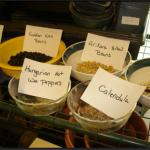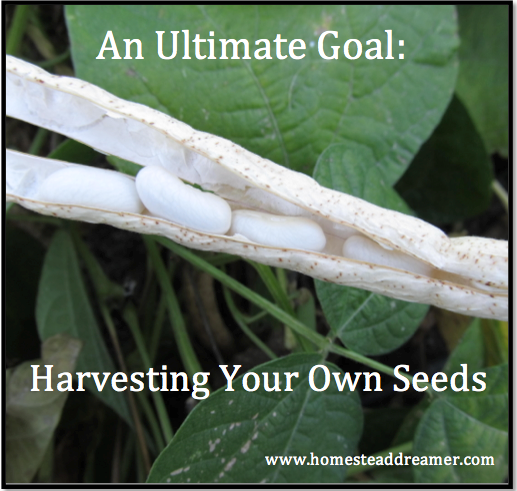To me, learning how to harvest your own seeds from year to year is one of the ultimate steps in self-reliance. When we first started this journey, I had dreams of being able to harvest my own seed. If you have learned the skills to properly grow, harvest, and store seeds; you will never have to rely on a seed company again! You have completed the links and now have a self-reliance badge of honor in food! I want that badge of honor too, but like most newbies – I was pretty clueless.
Photo Credit Copyright 2014 Angela Paskett, www.foodstorageandsurvival.com
While the idea of saving seeds is a romantic one, the amount of research needed can be overwhelming if you simply search for “harvesting and storing seeds” and yes, I really did do that Google search. I think I hid under my desk for an hour afterward. SO MUCH INFORMATION! Where does a newbie start?
Like so many things in this lifestyle, the learning curve can be brutal and it really helps if you can break things down into small, chewable chunks. When I was planning my first garden, all I knew was I wanted to grow food versus flowers and that it had to be a protected area because of the insane amounts of rain we get here (13 feet average. Yes, feet!). Beyond that, I was overwhelmed so I broke it down to growing the veggies we ate the most such as carrots, onions, and green beans. Corn is not really an option where I live (never gets hot enough and too wet overall) so that was out. I ended up adding in many other things but at least I had a starting point.
After I crawled out from under my desk, I figured that it would be best to research seed saving on those foods we eat the most, just like when I was planning the garden out. It certainly narrowed my search down and made it much easier to handle. I already knew about garlic and potato ‘seeds’ since they are so easy. Garlic does put off a flower that will have seeds but you can also simply plant a clove of garlic in the fall and the following spring you should have a plant come up (yes, there is more to it but you get the idea)! Potatoes are also easy; you can simply take a nice, healthy potato and cut it so there are 2-3 ‘eyes’ per chunk then plant them in the fall for the following year’s growth. Some readers may argue that you need ‘potato seed’ to grow potatoes but that is simply not true. A ‘potato seed’ is still a potato that you can eat like you normally would. The difference is when you are buying ‘potato seed,’ you are getting something that is supposedly disease and blight-free. Easy peasy!
Harvesting your own seeds for the next growing season is a HUGE step in self-reliance!
What about carrots, onions, or green beans? That took a little more research. Almost all of your veggies will flower if you let them and then go to seed so you can simply let a few go and harvest when the time is right. Onions and carrots are both biennial which means they have to grow 2 years to flower and produce seeds. The carrots are a little easier in that you can simply leave them in the ground to overwinter (you may need a mulch or raised bed if you get really hard freezes) and the next year, they will produce flowers and seed. Onions are a little more tricky. Yes, they take two years but you cannot leave it in the ground; you have to pull it and make sure it stays in temps of 45-55 degrees F. This process is called vernalization and is important because the bulb needs 4 weeks or so of cooler temps to trigger the stalks and scapes to grow. Now that I think about it, I wonder if that is what happened with my onions from last year. They sprouted like crazy and I had to dehydrate what was left instead of losing it all. Anyway, green beans and peas are much easier! Simply let some stay unharvested on the plant until they begin to turn good and brown. Let them dry out a little before putting into a paper bag to finish drying.
The Benefits

The first benefit is obvious: you don’t have to buy seeds from companies again! You know exactly how the plant was grown and cultivated the seeds yourself. Another major benefit is you will get to know the full cycle of the plants you harvest seed from. You can become a master of certain plants. I know a lady who has been growing her own garlic for 10+ years. It’s the same (incredibly tasty) strain from year to year and let me tell you, she is a Master. When it comes to all things garlic, I go to her. I personally would like to master carrots and onions. They both take two years to go to seed and there aren’t many people who don’t like one or the other; or both! I love these plants because every part is edible. I use the leftover greens from them when I am making my vegetable stock from scraps. There are other benefits, depending on your situation. From a “Prepper” point of view, seed harvesting is a vital skill and anyone who can successfully grow food and harvest seed for the next year will be worth their weight in gold…or grain! From a frugal point of view, you are saving money and maybe even making extra money on the side selling seeds or extra onions.
The intent of this article is not to tell you how to do all of these things per se: it would be more accurate to say that I am learning these things myself and this is what I have come up with so far. 😉 We will be trying to save seed from the green beans and peas this year. We will also save some garlic for next year’s crop and hopefully some potatoes, too! With luck, I will have a follow up post about my success in this Ultimate Goal of mine.
What are YOUR big goals of things to learn around the homestead? Share in the comments below, we love to hear from you!
Post may contain affiliate links




